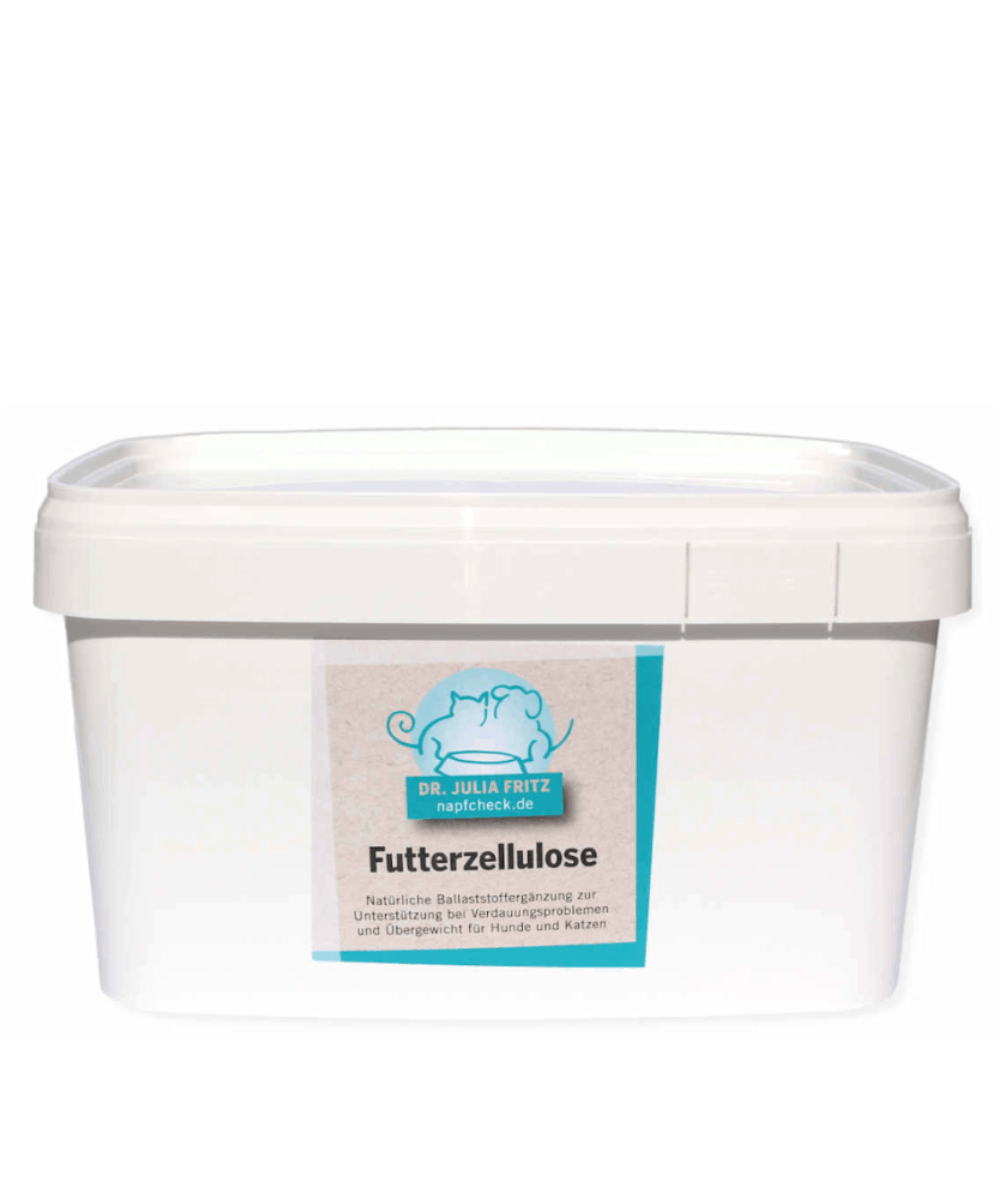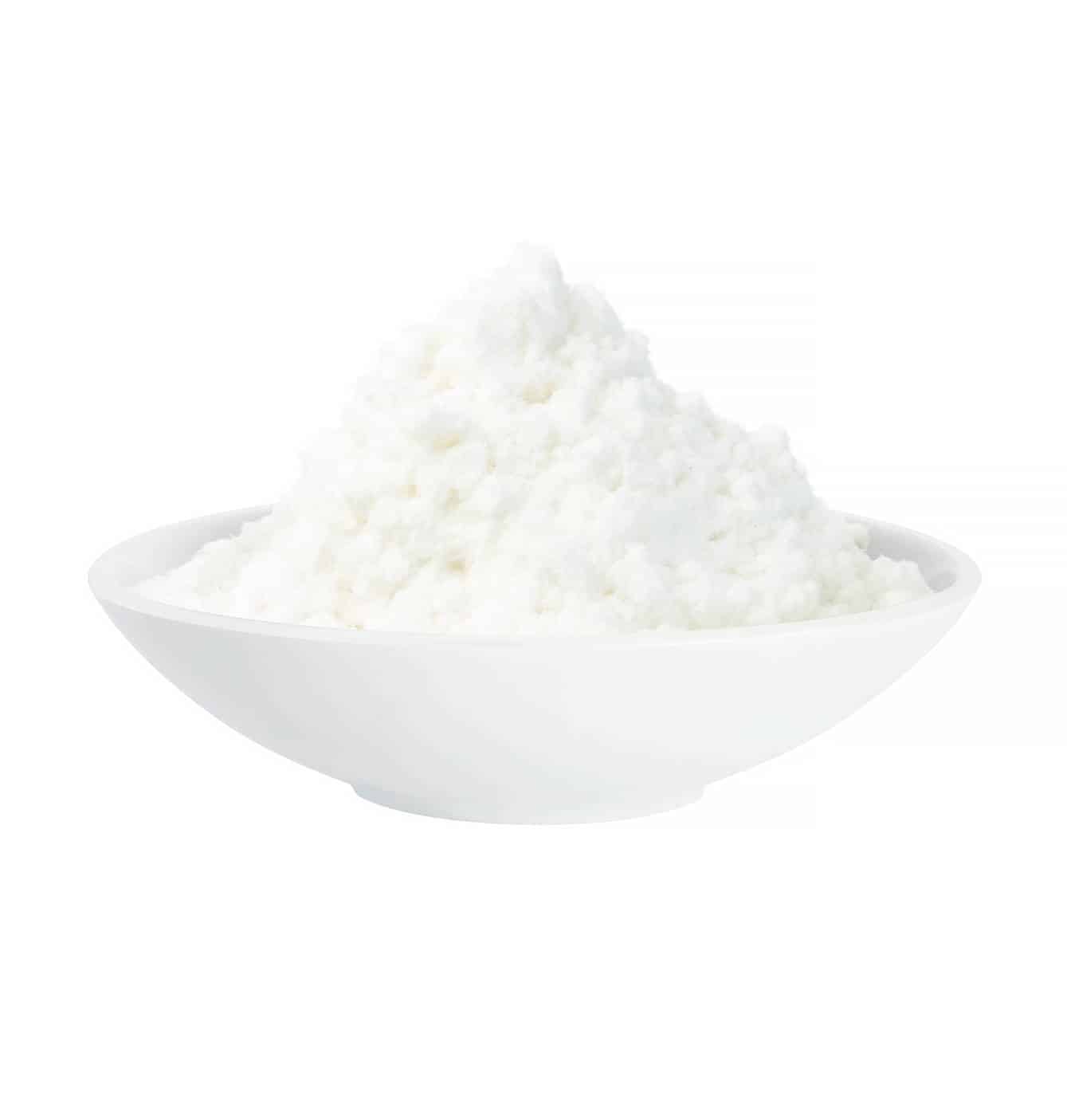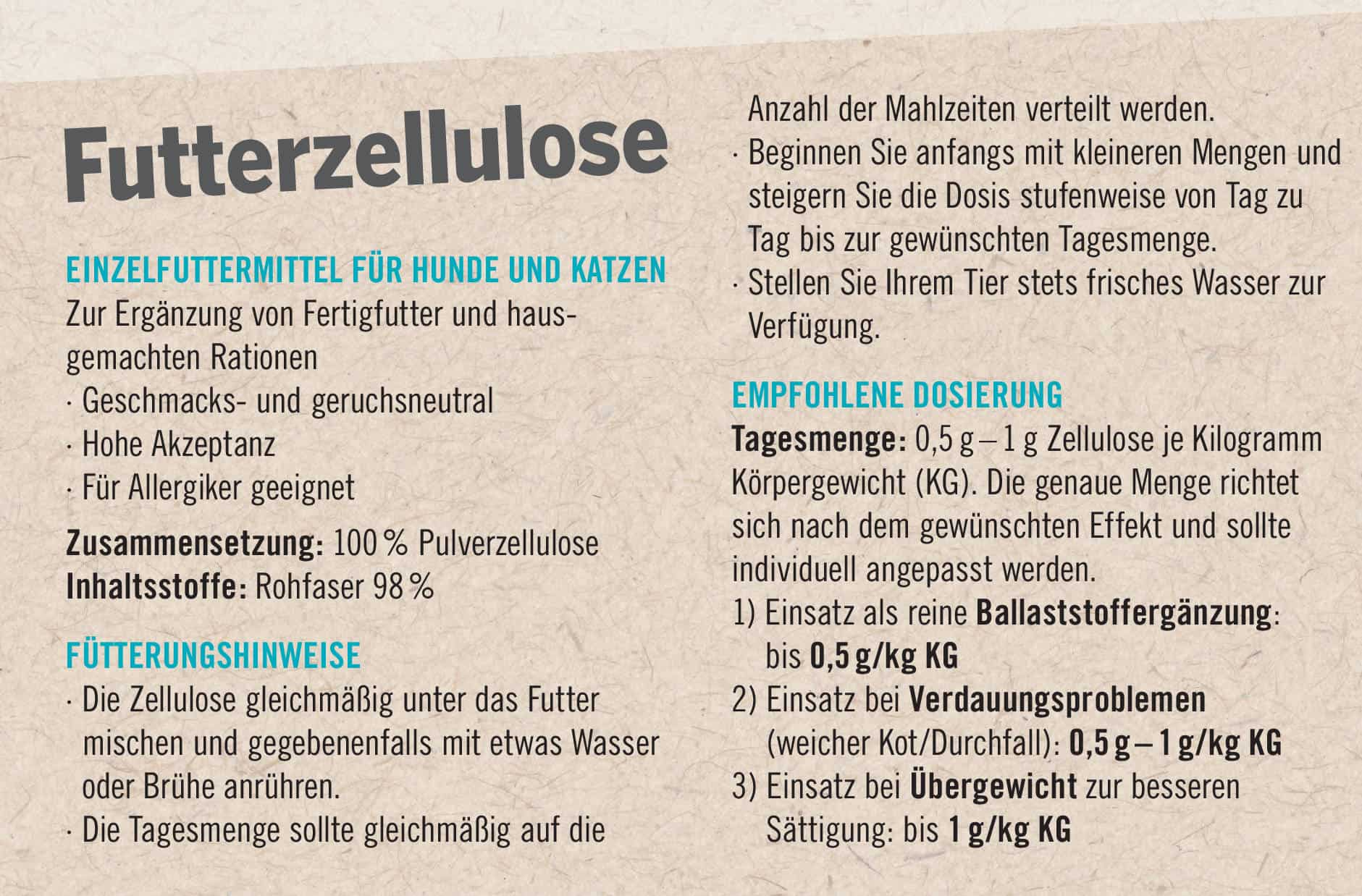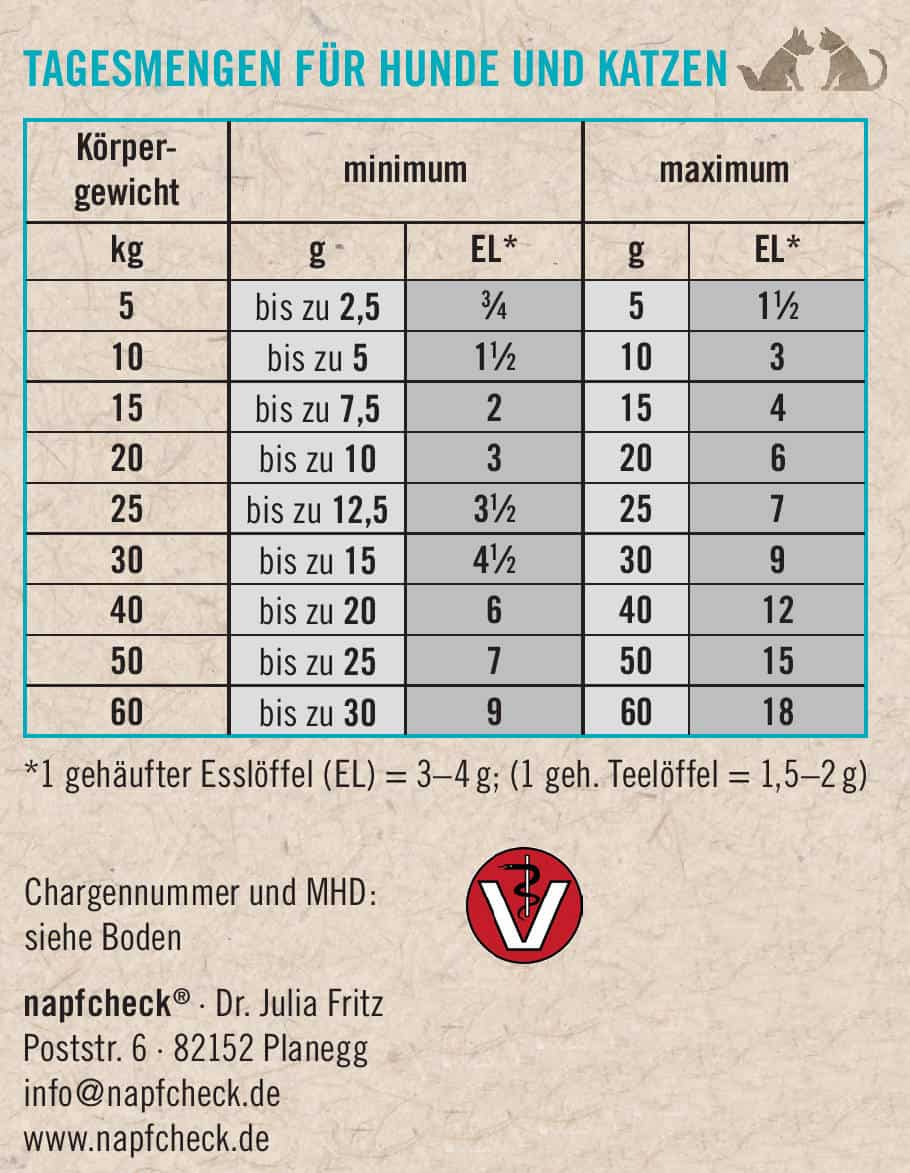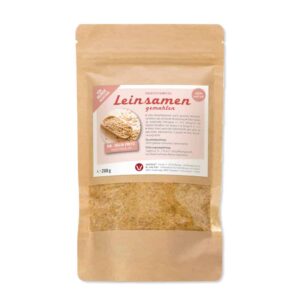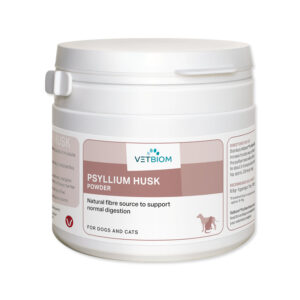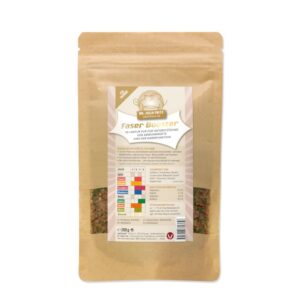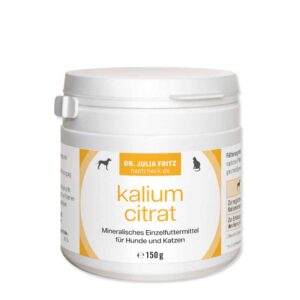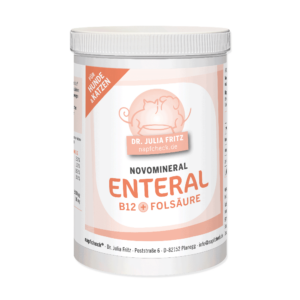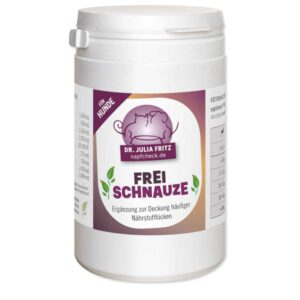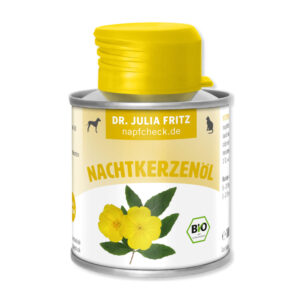napfcheck feed cellulose - Natural fiber supplement
- To support people who are overweight, e.g. for better satiety
- To support digestive problems, e.g. to improve the consistency of faeces
- Optimum properties thanks to ideal fiber length (particularly long fibers)
- To supplement ready-made feed and home-made rations
- Neutral taste and odor, very high acceptance
- 100% pure powder cellulose (no granules)
- Hypoallergenic, suitable for allergy sufferers
- Developed by a veterinary specialist on the basis of decades of experience in nutritional advice
FAQs on napfcheck feed cellulose
What is feed cellulose?
Cellulose, also known as cellulose, is an odorless and tasteless plant fiber that is mainly found in the cell wall of plants and serves as a scaffolding substance. Together with other fibers, it forms the skeleton of the plant, so to speak. Cellulose is found both in food (e.g. in vegetables or pulses) and in the garden (e.g. in grasses and trees). As cellulose is largely indigestible for dogs and cats, it is generally regarded as a dietary fiber.
How is feed cellulose produced?
Feed cellulose is a natural product obtained from lignified parts of native deciduous trees. The pulp is first purified using pressure and heat and the cellulose is extracted. It is then mechanically processed and finely ground. A distinction is made between different qualities depending on the degree of impurity. The napfcheck® feed cellulose is of food quality, is guaranteed to be produced sustainably and has an optimum fiber length of 300 μm.
What can I use feed cellulose for?
There are many possible uses for cellulose in dog and cat nutrition. The optimum amount depends on the desired effect.
- NATURAL SOURCE OF BALLAST: For low-fiber rations (e.g. elimination diets, rations without vegetables) or animals with intestinal sluggishness (e.g. seniors), cellulose can be used in lower doses to support regular digestion. Due to its purity, our feed cellulose is also particularly suitable for animals with feed allergies.
- CONSTIPATION: Due to its intestinal peristalsis-promoting properties, cellulose can also be used to help with constipation. If your pet has frequent or prolonged constipation, please consult your vet.
- SOFT FEET / POOR FECAL CONSISTENCY: Our feed cellulose has a very high water binding capacity and can therefore bind excess water in the intestine and thus improve the consistency of the feces. No water is removed from the body. Cellulose is suitable for large dogs, for example, which naturally tend to have soft stools, but also for animals with chronic diarrhea of non-infectious origin (e.g. due to stress). Please consult your vet in the event of poor general health or persistent diarrhea.
- OVERWEIGHT / SATURATION: Our cellulose can be used to support animals that are overweight during the diet. Supplementing with feed cellulose reduces the digestibility of the feed and thus the energy intake. The high swelling capacity of cellulose also increases the feed volume. This stimulates intestinal activity and contributes to better satiety.
References:
- Engels (1948) Futterzellulose ihre Gewinnung und Verwertung. Hieronymus Mühlberger, Munich
- Kienzle E, et al. (2001) Effect of cellulose on the digestibility of high starch versus high fat diets in dogs. Journal of Animal Physiology and Animal Nutrition, 85:174-185
- Krug S (2010) Dietary use of autenzymatically indigestible herbal substances in dogs and cats - literature study and retrospective owner survey. Dissertation of the Faculty of Veterinary Medicine of the LMU, Munich
- Prola L et al. (2006) Interaction between dietary cellulose content and food intake in cats. The Journal of Nutrition, 136 :1988-1990
- Wichert B, et al. (2002) Influence of different cellulose types on feces quality of dogs. The Journal of Nutrition, 132:1728-1729
- Zentek J (1996) Cellulose, pectins and guar gum as fiber sources in canine diets. Journal of Animal Physiology and Animal Nutrition, 75: 36-45

